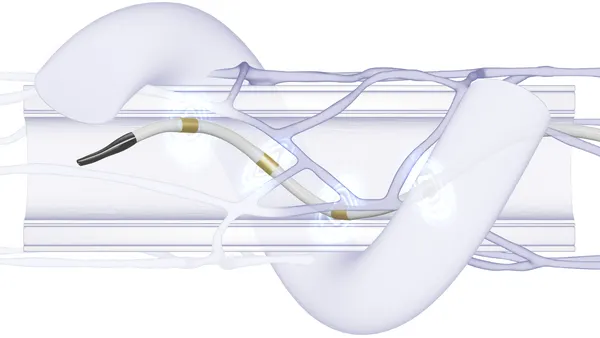A health advisory committee recommended that Medicare consider measures such as time in range and safety data when making coverage decisions about diabetes devices. In a Tuesday meeting, the Medicare Evidence Development and Coverage Advisory Committee (MEDCAC) discussed what clinical endpoints the Centers for Medicare and Medicaid Services should ask for on devices used to manage Type 1 diabetes and insulin-dependent Type 2 diabetes in older adults.
The CMS convened the panel because devices used to monitor and control glucose levels, such as continuous glucose monitors and insulin pumps, have not been studied as much in seniors, and insulin-dependent Type 2 diabetes is rising in older adults, the agency said in a briefing.
The CMS also plans to finalize guidance soon on how it will review evidence during national coverage decisions.
Steven Farmer, the agency’s chief strategy officer for coverage, said device manufacturers will be better positioned if they anticipate both FDA and CMS expectations.
The advisory panel voted on the importance of four types of evidence in studies of diabetes devices: surrogate markers, safety, health outcomes and quality of life.
Seven of the nine panelists found surrogate markers — such as time in range, the number of hypoglycemic episodes or impact on A1c — were “extremely important.”
“I think this is actually the most important because it's what you're asking — does the device do what it says it's trying to do?” said Alexander Fanaroff, an assistant professor of medicine at the University of Pennsylvania Perelman Center for Advanced Medicine.
Most panelists also found device safety “very important.” The metric was defined as hypoglycemia-related emergency department visits, harms such as tissue damage, device discontinuation rates and patient preferences.
Panelists said that safety is key but raised concerns about device discontinuation as a safety metric. For example, maybe a patient doesn’t have transportation to get to the pharmacy or clinic to pick up needed support or supplies, said Brian Isetts, a professor at the University of Minnesota College of Pharmacy.
The votes on health outcomes and quality of life metrics were less decisive.
“I'm fearful that having strict measures that require looking at diabetes complications, including kidney disease and major cardiovascular events, for CMS to cover these devices would be prohibitively expensive … and would then make it so that devices would not be available for the Medicare population,” said Joy Lewis, a professor of internal medicine and public health at A.T. Still University.
Lewis voted that measures of quality of life were “very important” because a person might be able to have better hypoglycemic awareness, eat what they want and exercise without fear.
By contrast, Melissa Garrido, a research professor of health law, policy and management at Boston University School of Public Health, voted it was “not important.”
“I think the quality of life measures are important and should continue to be studied, but I don't think they should factor into a CMS coverage decision,” said Garrido.
Industry backs time-in-range metric
Diabetes companies and nonprofit leaders also used the meeting to share their thoughts with CMS advisers.
Dexcom and Tandem Diabetes Care executives both advocated for time in range as an important metric.
“In a population like this, there's no agreed upon hard stop of what a glycemic target should be because of high risk for hypoglycemia and other heterogeneous factors,” said Laurel Messer, Tandem’s senior director of medical affairs. “So it's really important to consider individual needs in older people living with diabetes.”
Aaron Turner-Phifer, director of health policy at diabetes nonprofit JDRF, called attention to time in range and level 1 hypoglycemia as important metrics for people with Type 1 diabetes.
JDRF and American Diabetes Association leaders praised CMS’ recent decision to expand CGM coverage to all people with diabetes who take insulin or have a history of hypoglycemia and urged the agency not to limit device access.
“We further caution against any suggestion, as implied in the prepared documents for this meeting, that there is a lack of clear evidence regarding the impact of diabetes on older adults living with [Type 1 diabetes],” Turner-Phifer said. “We do not believe that there's a fundamental difference in the physiology of older adults that warrants separate data relative to those who are younger.”













